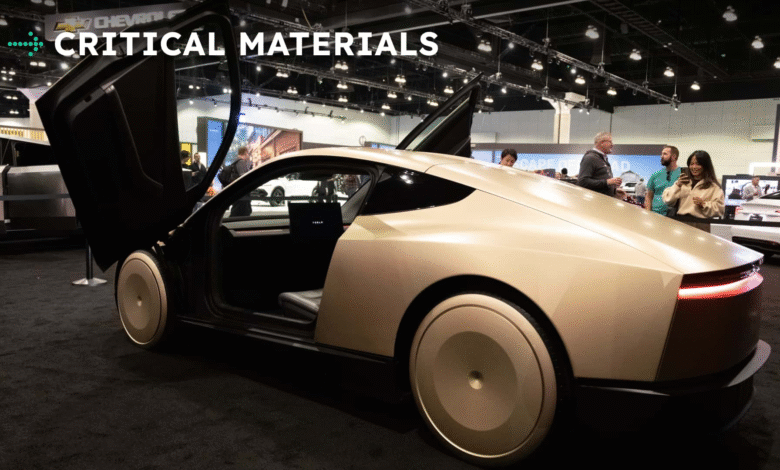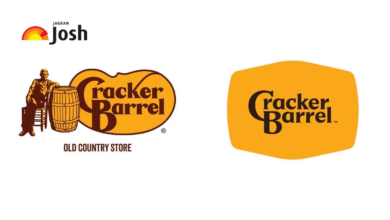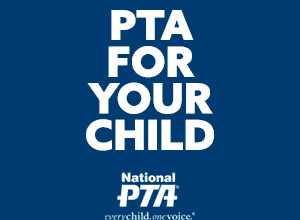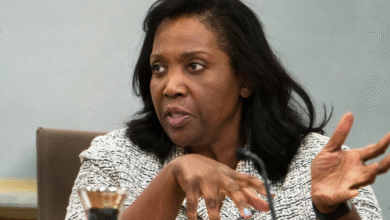Tesla Robotaxi Faces Protests in Austin Over Safety Concerns

As Tesla prepares to launch its highly anticipated robotaxi service, the company faces significant pushback in Austin, Texas, just weeks away from the planned rollout. Elon Musk’s robotaxi initiative is expected to revolutionize urban transportation with its self-driving technology, but safety concerns surrounding the venture have been mounting. In light of recent protests, public safety advocates have voiced their apprehensions regarding Tesla’s self-driving cars and their track record of accidents, raising questions about the reliability of the upcoming pilot program. Amid the uproar, critics argue that without transparent safety data, the efficacy of Musk’s robotaxi remains uncertain. As the debate heats up, the tension between innovation and public safety continues to dominate the conversation in the lead-up to the launch.
In the heart of Austin, Texas, the impending launch of a revolutionary ride-hailing service has spurred significant controversy around safety protocols and transportation technology. The novel concept of Tesla’s autonomous vehicle fleet, often referred to as the robotaxi service, is meant to set a new standard in urban mobility but has ignited a passionate discourse among residents and local activists. Participants are particularly concerned with Elon Musk’s commitment to self-driving innovation, especially following recent incidents raising alarms about the safety of such automated systems. The spotlight on Tesla’s upcoming pilot program has prompted debates surrounding regulation and accountability in the fast-evolving automotive landscape. As Tesla’s developments unfold, the intersection of technological advancement and public welfare remains a pivotal theme in discussions about the future of transportation.
Tesla’s Robotaxi Launch in Austin: A Controversy Unfolds
As Tesla prepares for its much-anticipated robotaxi launch in Austin, tensions are rising among community members and safety advocates. The planned launch date of June 22 has sparked protests led by various groups, including the Dawn Project and Tesla Takedown, who are raising alarm over the safety implications of Tesla’s autonomous technology. These protests highlight growing concerns about the efficacy of Tesla’s partial automation systems, which many believe are still not safe for public roads. The anxiety surrounding the robotaxi service reflects broader apprehensions about self-driving cars and their impact on urban traffic dynamics.
Activists gathered in downtown Austin to express their unease, especially regarding Elon Musk’s affiliation with the Trump administration. Critics argue that such alliances compromise public safety priorities. Many of these protesters are calling for stricter regulations and transparency regarding Tesla’s driver assistance technologies. As the June launch date approaches, the demand for rigorous safety assessments grows louder, emphasizing the need for accountability in the rollout of cutting-edge self-driving innovations.
Safety Concerns Surrounding the Tesla Robotaxi Pilot Program
The safety of Tesla’s robotaxi pilot program remains a focal point of public discourse. Data from the National Highway Traffic Safety Administration (NHTSA) indicates that Tesla’s Autopilot and Full Self-Driving (FSD) features have been linked to numerous incidents on the road, raising flags about the reliability of these technologies. Critics argue that without comprehensive safety testing and public transparency, the introduction of robotaxis entails unacceptable risks. This skepticism was further amplified during recent protests when demonstrations showcased a Model Y struggling to execute basic safety protocols, such as stopping for a simulated child in the roadway.
Many individuals question Musk’s assertion that the robotaxi service will revolutionize urban mobility, fearing it could lead to increased accidents due to the unreliable performance of current automation technologies. Community members, including concerned parents, have rallied for more substantial evidence of safety before Tesla’s plans are permitted to proceed. The responsibility of ensuring public safety versus technological advancement is at the heart of the protests, posing a serious question about the acceptable pace of innovation within the automotive industry.
Community Reactions: Protests Against Musk’s Robotaxi Plans
Public backlash against Tesla’s planned robotaxi service expresses deep-rooted concerns about the balance between innovation and public safety. Demonstrators in Austin have organized protests that have garnered media attention, illustrating widespread skepticism about Elon Musk’s ambitious vision for autonomous vehicles. Voices from the community, such as activists and local residents, highlight the perceived risks associated with deploying unproven self-driving technologies on public streets. The sentiment is clear: many feel that significant safety data disclosures are paramount before allowing these vehicles to operate without human oversight.
Critics argue that the company should prioritize public transparency and safety considerations over rapid deployment. During the protest, Stephanie Gomez and other participants underscored their distrust of Tesla’s safety protocols, calling for more extensive data on the performance of both the Autopilot and FSD systems. The collective demand for accountability signifies a broader mistrust of tech giants in managing safety effectively, suggesting that without sufficient public confidence in Tesla’s safety measures, the future of autonomous transportation may be met with resistance.
Evaluating Tesla’s Full Self-Driving Technology and Its Implications
Tesla’s Full Self-Driving (FSD) technology has been a point of contention among regulators, safety advocates, and consumers alike. While the promise of robotaxis signifies a transformative leap in personal transportation, the reality of its implementation raises significant safety and ethical questions. Reports have pointed out a troubling history of incidents involving FSD, which have been implicated in several accidents. The upcoming launch of the robotaxi service accentuates the urgency for rigorous analysis of the FSD capabilities before it is deployed en masse.
Elon Musk has publicly asserted that the FSD system is nearing a point where it can navigate complex driving scenarios without human intervention. However, many experts remain skeptical about this timeline, arguing that actual performance data needs to be published to truly evaluate its safety. Concerns loom over whether Tesla is prioritizing innovation at the potential expense of safety, as many fear that a premature rollout of the FSD technology could have dire consequences on the road. The debate centers on the responsibility of automakers to ensure that groundbreaking advances do not outpace safety regulations and moral responsibilities.
Regulatory Responses to the Tesla Robotaxi Service
As Tesla moves closer to launching its robotaxi service in Austin, regulatory bodies are simultaneously grappling with the implications of autonomous vehicle technologies. The proposed service reignites discussions around the adequacy of existing transportation laws amid innovations in self-driving cars. Officials are facing pressure from community activists who are demanding stricter oversight and a thorough evaluation of the safety protocols governing robotaxis. Ensuring that these vehicles meet rigorous safety standards before widespread usage is crucial to placating the growing public unrest regarding this technological leap.
Regulatory responses will likely shape the future of Tesla’s robotaxi plans, as the power to approve or deny the service lies in the hands of government agencies. The tensions between regulatory bodies and private manufacturers like Tesla highlight the challenge of keeping pace with rapid technological advancements. Striking a balance between fostering innovation and ensuring public safety will prove essential as stakeholders navigate the complexities associated with the integration of self-driving cars into everyday transportation.
Safety Testing: A Call for Transparency in Tesla’s Operations
The protests surrounding Tesla’s planned robotaxi service underscore a critical need for transparency in safety testing processes. Many community members have called for Tesla to release comprehensive data regarding the safety assessments conducted on their self-driving technologies. The lack of accessible safety information raises significant concerns about Tesla’s commitment to consumer safety and public awareness. As more people advocate for open disclosure, it becomes increasingly clear that the absence of transparency may hinder public trust in innovative self-driving solutions.
Safety testing results should ideally have been disclosed prior to initiating the robotaxi pilot program, as public opinion hinges on understanding how these vehicles operate in real-world conditions. Participants in the protests voiced apprehensions about the reliability of Tesla’s technologies and the degree to which they can ensure safe transportation. To allay fears and persuade a skeptical public, Tesla must prioritize transparent communication and compile credible, independent evaluations of its autonomous vehicle systems.
Comparative Analysis of Tesla and Other Self-Driving Technology Firms
Comparing Tesla’s approach to self-driving cars with that of other technology firms offers critical insights into the landscape of autonomous vehicle development. While Tesla has been a pioneer in pushing for widespread adoption of self-driving features, other companies may exercise more caution, emphasizing rigorous testing and regulatory compliance before introducing autonomous systems to the market. This variance in strategy presents various risks and benefits regarding both innovation and consumer safety. Concerns overshadow Tesla’s approach, as recent testing failures have prompted scrutiny over its readiness to deploy robotaxis.
In contrast, companies that favor a more gradual integration of autonomy into public transportation models typically emphasize the importance of extensive safety validation before any commercial rollout. This method nurtures consumer confidence and mitigates fears associated with self-driving technologies. The ongoing developments within Tesla’s robotaxi program are likely to influence the path that other firms will take moving forward, as the lessons learned from these trials will serve as critical touchpoints for the future of autonomous transportation.
The Future of Transportation: Robotaxis and Public Safety
The emerging trend of robotaxis poses intriguing questions about the future of urban transportation and public safety as cities evolve with technological advancements. While the allure of self-driving cars promises convenience and reduced human error behind the wheel, safety concerns cannot be overlooked, particularly in densely populated areas. The ongoing protests in Austin illustrate that public acceptance of robotaxi services is contingent upon demonstrating safety features and a commitment to serving community needs. As opposition grows against a quick rollout, it becomes evident that the route to innovation requires careful consideration of public sentiment.
To integrate robotaxi services into everyday use, companies like Tesla must actively engage with communities, addressing safety apprehensions head-on. Increased communication surrounding technology, such as automated safety features and accident prevention strategies, will be essential to fostering trust. Looking ahead, the dialogue surrounding transportation in urban environments should prioritize both advancement and safety to create a sustainable and secure future for all residents.
Innovations in Autonomous Vehicle Technology: An Overview
As companies across the globe race to innovate within autonomous vehicle technology, Tesla stands at the forefront, continuously developing features that promise to reshape mobility. The push towards robotaxi systems, propelled by advancements in artificial intelligence and machine learning, seeks to revolutionize the concept of personal transportation. However, despite the remarkable potential, stakeholders must confront pivotal safety questions associated with deploying these technologies in real-world environments, especially given Tesla’s recent safety incidents.
The conversation around autonomous vehicle innovations should encompass not only technological advancements but also the ethical implications of their use in urban settings. With Elon Musk advocating for rapid implementations, how these innovations are perceived and tested is crucial. Without solid foundations of safety that reassure the public, further advancements may face greater backlash, deterring the acceptance of automated technologies essential for future urban infrastructure.
Frequently Asked Questions
What is the Tesla robotaxi and how does it relate to Elon Musk’s plans?
The Tesla robotaxi is a proposed self-driving taxi service that Elon Musk plans to launch, utilizing Tesla’s advanced Full Self-Driving (FSD) technology. Set for pilot testing in Austin, Texas, this service aims to revolutionize urban transportation by enabling Tesla vehicles to operate autonomously without a driver.
What are the safety concerns related to the Tesla robotaxi initiative?
Safety concerns surrounding the Tesla robotaxi initiative stem from the automated driving features offered by Tesla, especially the FSD package. Critics, including public safety advocates, worry about Tesla’s safety record, citing links to accidents involving its Autopilot and FSD systems, prompting protests in Austin.
When is the robotaxi pilot program scheduled to launch in Austin?
The Tesla robotaxi pilot program is tentatively scheduled to launch on June 22 in Austin, Texas. This program is seen as a significant step toward Musk’s vision of a fully autonomous rideshare service across various urban areas.
What has been the public response to Elon Musk’s robotaxi plans?
The public response to Elon Musk’s robotaxi plans has been mixed, with significant protests occurring in Austin. Groups like the Dawn Project and Resist Austin express concerns about public safety and the transparency of Tesla’s self-driving technology amid fears it may not meet safety standards.
How does the Tesla robotaxi service utilize self-driving cars?
The Tesla robotaxi service plans to leverage self-driving cars equipped with Tesla’s Full Self-Driving (FSD) software, which allows vehicles to navigate autonomously. However, critics question the readiness and safety of this technology, particularly in light of reported failures during demonstrations.
What are the implications of Austin Tesla protests on the robotaxi launch?
The protests in Austin regarding Tesla’s robotaxi launch reflect deep-seated safety concerns among citizens and advocacy groups. These demonstrations may influence regulatory scrutiny and public perception, potentially affecting the timeline or acceptance of the robotaxi service.
What features are included in Tesla’s vehicles designed for the robotaxi service?
Tesla’s vehicles designed for the robotaxi service include updated versions of the Model Y, specifically enhanced for autonomous operation with the forthcoming Full Self-Driving (FSD) software. These features aim to improve navigation and safety but have raised concerns amid public skepticism.
How is Tesla addressing safety testing results for its robotaxi technology?
Tesla has faced criticism for its lack of transparency regarding safety testing results for its robotaxi technology. Protesters have called for more public access to these results to ensure the safety of the self-driving cars before widespread deployment.
| Key Point | Details |
|---|---|
| Protests Against Tesla | Protests took place in Austin, Texas, against Elon Musk’s plans for the robotaxi service. |
| Safety Concerns | Critics are worried about Tesla’s safety record, highlighting issues with partially automated driving systems. |
| Launch Date | Elon Musk aims for a tentative launch of the robotaxi at June 22. |
| FSD Technology | Tesla’s FSD technology is not yet available to the public and has raised significant safety questions. |
| Protest Highlights | During the protest, demonstrators used a Model Y to showcase dangers of the FSD technology, including failure to stop for obstacles. |
| Company Transparency | Protesters criticized Tesla for a lack of transparency regarding safety testing results. |
| Response from Tesla | As of now, Tesla has not commented on the protests or safety concerns raised. |
Summary
Tesla robotaxi plans have ignited significant protests in Austin, reflecting deep-seated concerns about safety and transparency. As these protests unfold, key issues regarding the safety of Tesla’s partially automated driving systems are central to the debate. Critics demand accountability and transparency from Tesla regarding their technology’s risks and capabilities, particularly with the imminent launch date approaching. The ongoing situation highlights the need for thorough safety assessments before widespread adoption of robotaxi services.




